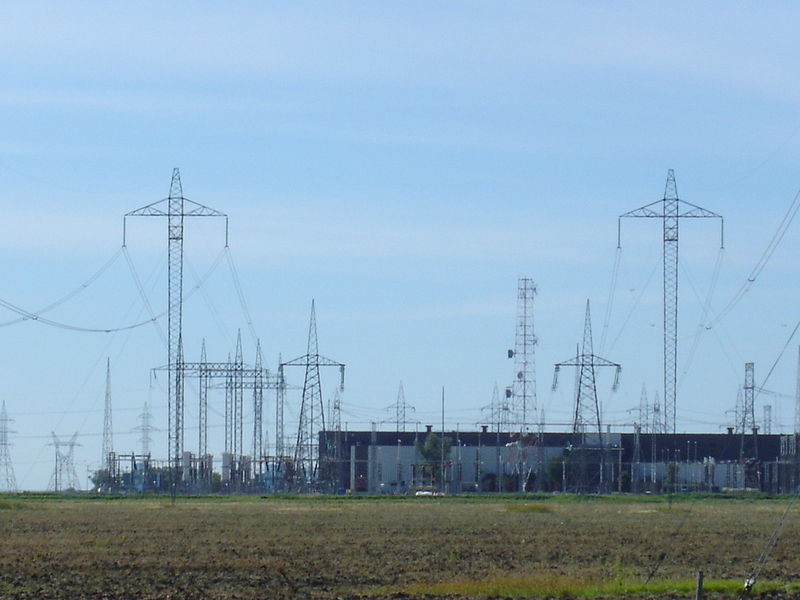Congressional Democrats have proposed a $3.5 trillion Clean Electricity Performance Program (CEPP).
This plan would act as a de facto renewable energy mandate and carbon tax that would cost Arizona residents $119.4 billion through 2052, says to a new study produced by the Center of the American Experiment (CAE).
If the study is correct, the CEPP would cost more than the entire operating costs of the existing electric grid.
Among the CEPP’s most expensive provisions is its carrot-and-stick approach to “encouraging” electricity providers to increase the amount of carbon dioxide emission free electricity sold on their systems by 4 percent per year or be subject to penalties.
This provision would result in a 45 percent increase in the costs of spending by 2031, a number that could rise to 90 percent if the state shutters its lone nuclear power plant, according to CAE’s analysis.
The higher prices would have the greatest impacts on low-income households who spend a higher percentage of their incomes on energy bills.
Payoffs and Penalties
Under the CEPP, companies that achieve their carbon dioxide reduction goals will receive federal payments totaling $150 per megawatt-hour (MWh) of “clean” energy generated.
Those who miss the mark will face federal fines of $40/MWh.
As a result, the CEPP shifts a portion of the cost of generating and maintaining electric infrastructure from states’ ratepayers to federal taxpayers.
Forty-one percent of Arizona’s electricity generation came from natural gas in 2019, 28 percent from nuclear power plants, 20 percent from coal, 5 percent each from hydroelectric plants and solar facilities, and just 1 percent from in-state wind installations.
Dramatic Electric Power Switch
Although under the CEPP, Arizona’s energy mix could retain the current share of electricity from nuclear and hydro, CAE estimates to meet the proposed carbon reduction goals, the state’s utilities would have to stop using coal completely, and the use natural gas to generate electricity would have to fall by more than half, to 20 percent.
By contrast, under CEPP, industrial solar and wind would have to increase by 38 and 7 percent, respectively, and 1 percent each of battery storage and thermal solar would have to be added as well.
Removing 41 percent of fossil fuel fired electricity generation would result in an 80-percent carbon-dioxide-free electric grid. The natural gas generation retained is to ensure backup generation during low periods of low wind and lack of sunlight.
Added Cost Accompany Switch
Under the CEPP, ratepayers will pay sharply higher prices for their electric power, CAE calculates.
The construction and operation of solar panels will add $46.6 billion in new costs to Arizona ratepayers’ power bills. Another $13.8 billion in costs will be added for wind turbines, and an estimated $15.3 billion for battery storage facilities.
The CEPP will also require that approximately $3.3 billion of transmission lines be built in Arizona.
Additional anticipated costs related to the power shift will stem from a likely increase in property taxes, the purchase of easements on private property, possibly through the use of eminent domain, guaranteed utility rates-of-return, and the costs related to maintaining natural gas generation capacity to be used intermittently.
Such costs are often omitted in calculations politicians and public utility commissions consider when they push expansion of renewable energy usage.
Not Counting Growth
The CAE’s study only examined the difference in cost between the two comparative electric grid systems to serve present demand.
It did not quantify any costs associated with any future growth in demand for electricity.
The state and the federal government both anticipate an increase in demand for electricity as the state’s population and economy grows, and new sources of demand arise. For example, under the Biden administration’s broader climate policies, demand for electricity will grow as electric appliances and electric vehicles replace appliances and cars using fossil fuels.
Arizona will need to nearly double its current installed capacity from 28,000 MW to 55,000 MW, as reliable fossil fuel power is replaced with intermittent renewable sources, says Isaac Orr, a CAE policy fellow who co-authored the study.
“The National Renewable Energy Laboratory conducted a study that found the amount of generating capacity would need to double in order for 66 percent of the cars on the road to be electric,” Orr said. “Based on this estimate, I’d say a 50 percent increase in electric power generating capacity could be a reasonable estimate.”
In addition, a portion the anticipated solar generation would be dedicated to charging batteries to produce power when the wind isn’t blowing and the sun night shining.
The Nuclear Option
If the CEPP becomes laws, not only should Arizona maintain its current supply of nuclear power, it would be wise to add new nuclear power to its mix to better ensure long-term reliability, says Orr.
“Arizona would be wise to retain its nuclear power plant and maybe encourage bringing more nuclear energy into the state’s mix,” said Orr. “Although our study did not examine the costs and benefits of adding new nuclear capacity to Arizona’s electric power mix, modeling we have conducted in other states consistently shows that it is less expensive to reduce emissions with new nuclear power plants than with wind turbines and solar panels.”
Duggan Flanakin (dflanakin@gmail.com) writes from Austin, Texas.
Internet Info
Tim Benson, “Research & Commentary: New Study Shows Excessive Costs CEPP Would Have on Arizonans,” The Heartland Institute, October 28, 2021; https://www.heartland.org/publications-resources/publications/research–commentary-new-study-shows-excessive-costs-cepp-would-have-on-arizonans
